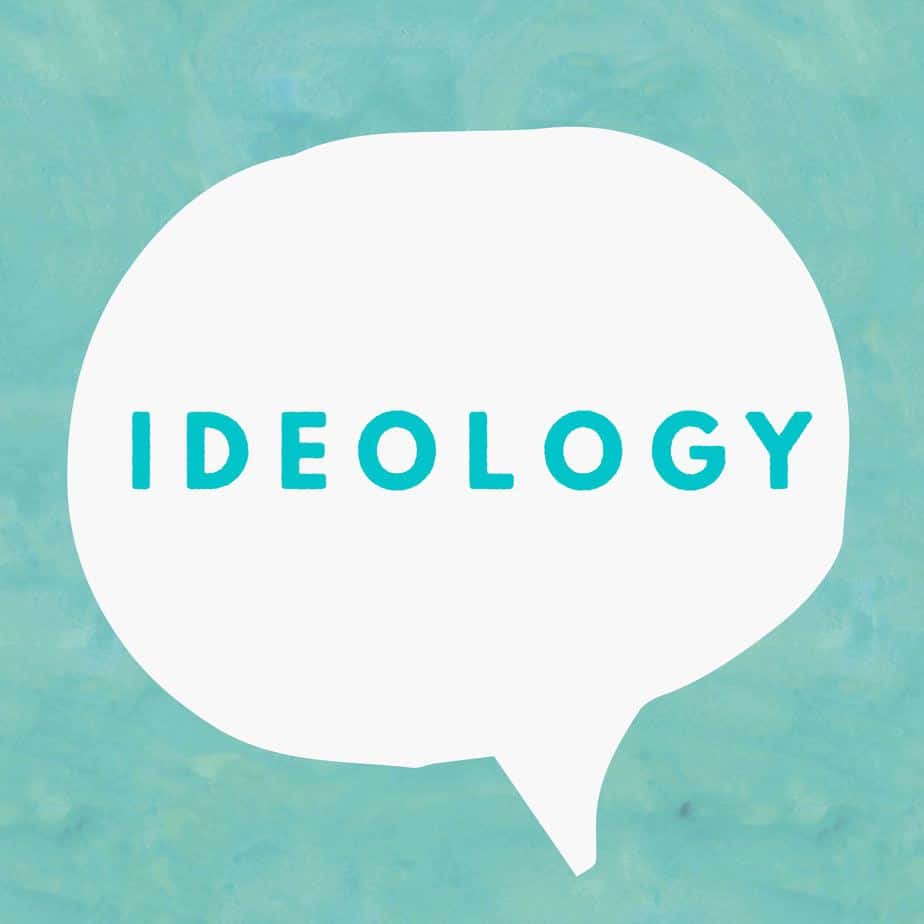Every novel, every painting, every work of art with meaning contains an ideology.
Every line of serious work that I have written since 1936 has been written, directly or indirectly, against totalitarianism and for democratic socialism, as I understand it. It seems to me nonsense, in a period like our own, to think one can avoid writing of such subjects. Everyone writes of them in one guise or another. It is simply a question of which side one takes and what approach one follows. What I have most wanted to do throughout the past ten years is to make political writing into an art.
George Orwell
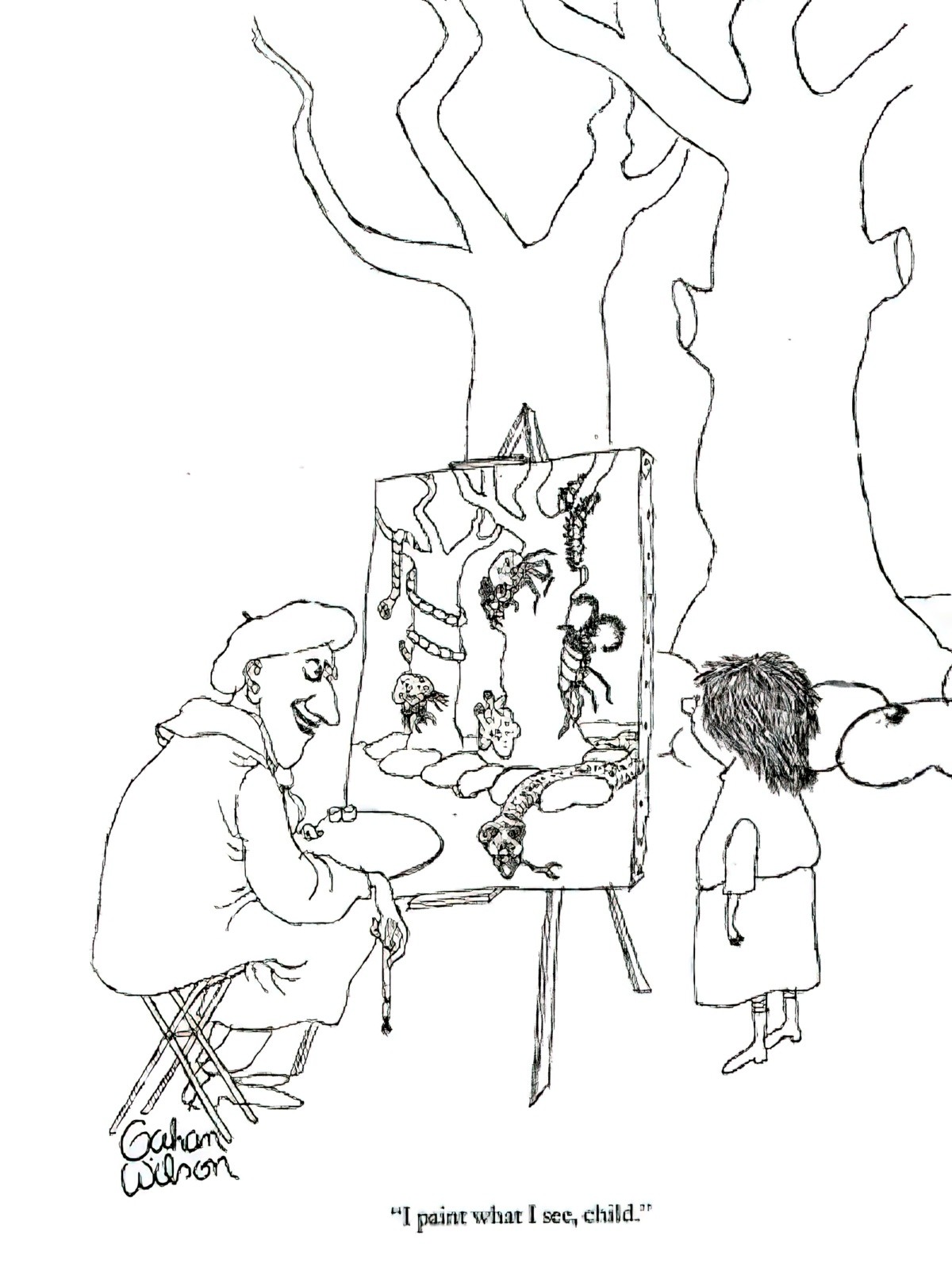
I don’t think one ought to worry too much about corrupting children, so long as one’s books are honest. It has always seemed to me (and this may sound unduly inspirational) that what is honestly intended, and done as truthfully as the author is able to do it, cannot intrinsically be regarded as harmful. On the whole I am inclined to think that children will pass unharmed over what they do not understand. The objection to the heavy sex novel is not that it is going to corrupt them, but that it is going to bore them stiff — by elaborating on experiences that are beyond meaning for them.
John Rowe Townsend, British children’s writer and scholar
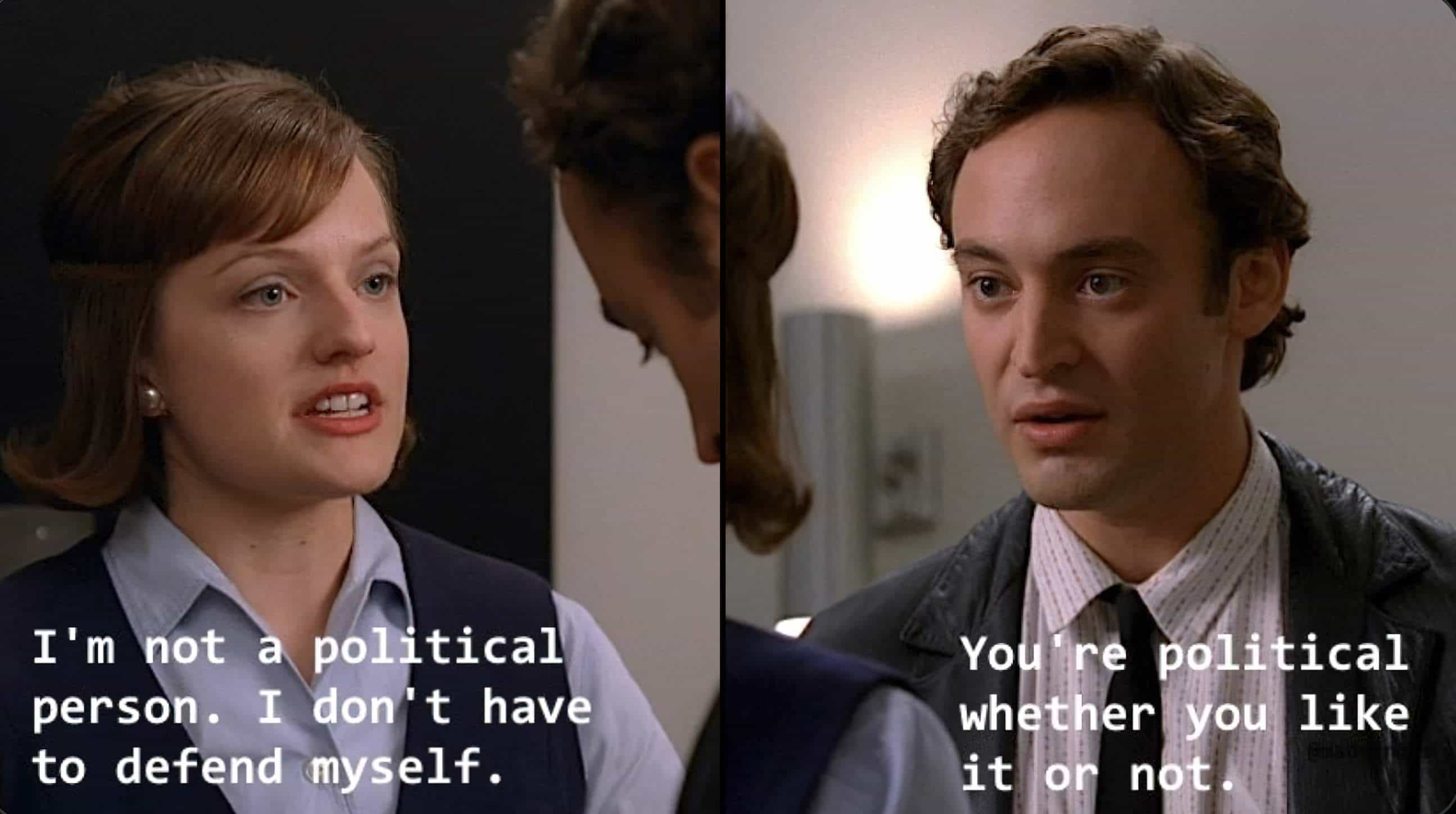
The certainty of story that allows a child to add it — with delight — to the category of ‘things that are so’, also lends to its content the slight implication that this is how things ought to be. We cannot be told ‘Once there was a prince’ without also being told (on some level and in some part) that it was right that there was a prince. What knits together out of nothing, and yet is solid enough to declare that it is so, recommends itself to us, although we don’t receive the recommendation straightforwardly. In this lies the power, and the danger, of stories.
Francis Spufford, The Child That Books Built
One of the fundamental changes in critical thinking and teaching over the past twenty years has been the acceptance that ideology is not a separate concept ‘carried by’ texts, but that all texts are inevitably infused by ideology. This has been particularly difficult to accept in the world of children’s literature, which is still widely assumed to be ‘innocent‘ of concerns of gender, race, power, and so on — or to carry transparently manipulative messages.
Peter Hunt
[P]olitical ideologies almost always work to distribute power unequally among people in a society and to justify that unequal distribution. Stories in which children question their parents’ authority usually end with the children finally accepting the need for that authority.
The Pleasures Of Children’s Literature, Nodelman and Reimer
We believe some ideologies so deeply that we consider them Truth: such ideologies as “education can improve people’s lives” and “it’s better to be rich than poor” can be difficult for people brought up in capitalist societies to recognize as arguable positions.
But all adolescent novels are informed by such sociopolitical beliefs. Laura Ingalls Wilder, for example, infuses her own libertarian ideologies* into all of the Little House books, but most especially into the later books written for adolescents. Although in actuality the Ingalls family was closely connected to their neighbors during the historical season of blizzards depicted in The Long Winter (1940), Wilder portrays the fictionalised Ingalls family as living entirely isolated in self-sufficiency. Influenced by libertarianism, her ideological goal was to portray government intervention as both unnecessary and suspicious. William Sleator’s House of Stairs (1974), Robert Cormier’s I Am the Cheese (1977) and Virginia Hamilton’s The Gathering (1981) provide similar ideological critiques of government politics.
Roberta Seelinger Trites, Disturbing The Universe: Power and Repression in Adolescent Literature
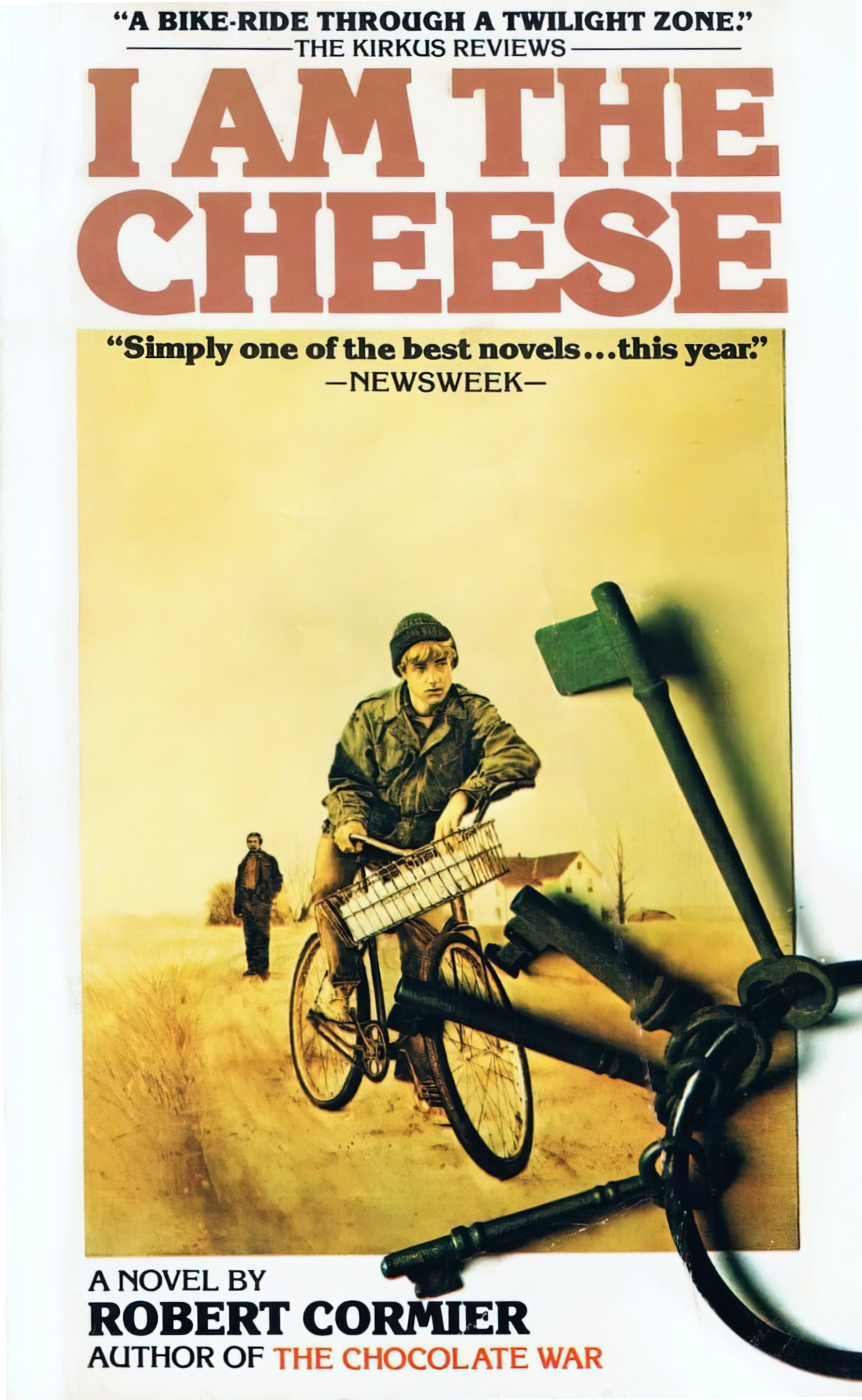
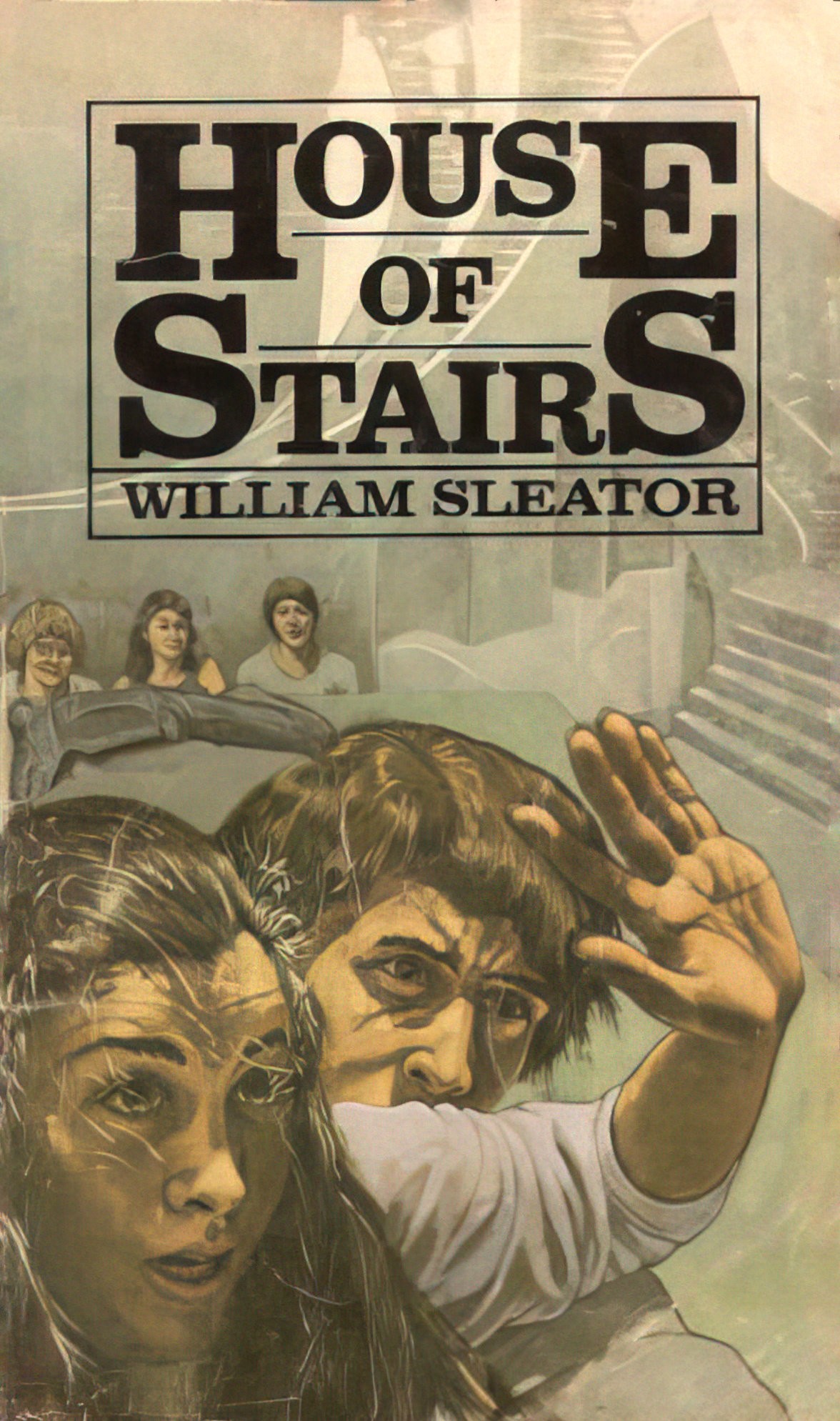
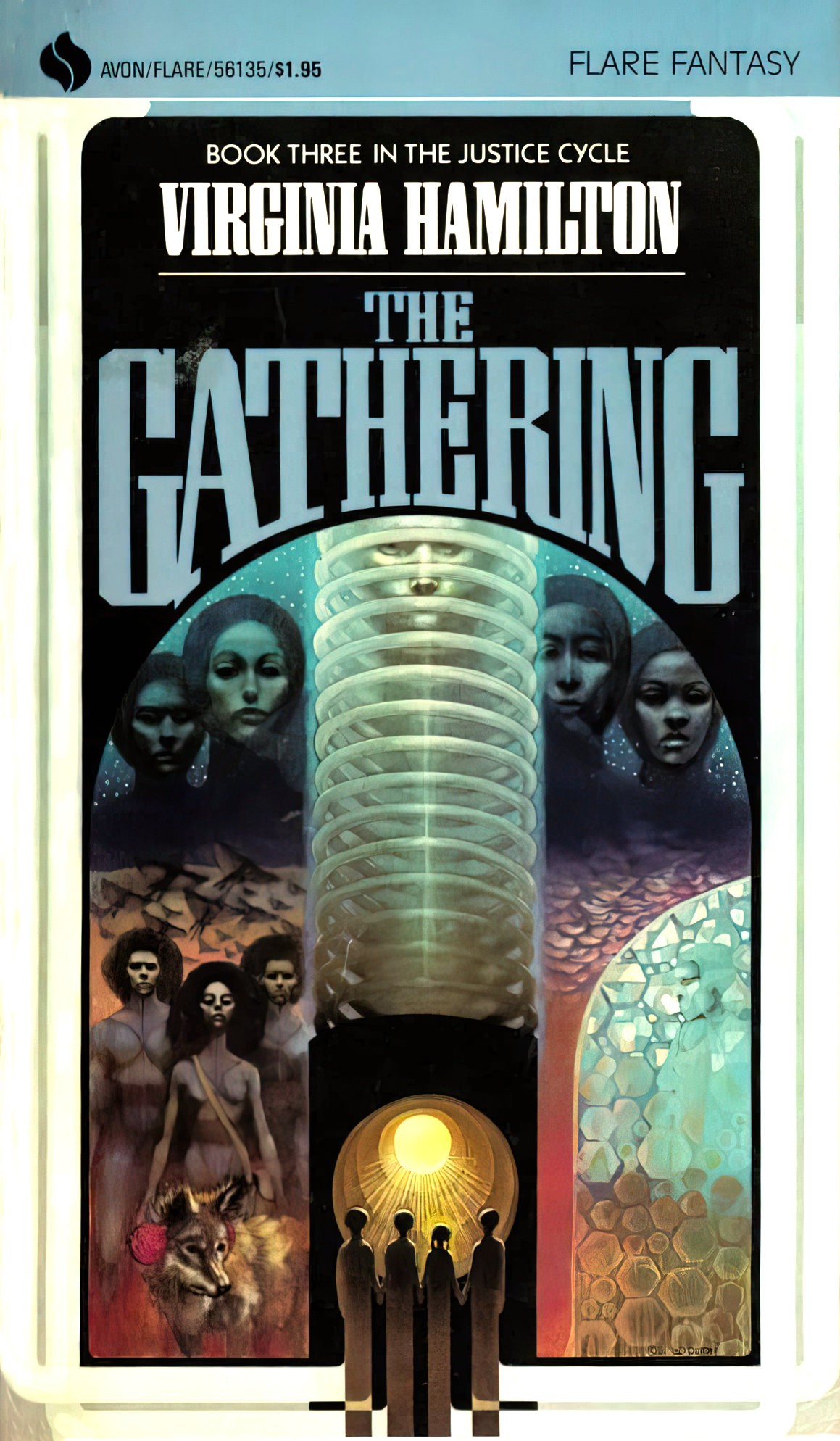
*I feel it’s a bit easier for a non-American to see libertarian ideologies when they crop up. From my perspective here in Australia, Australians value equality, in contrast to North Americans, who seem to value freedom. Equality wasn’t originally written into the American constitution (for obvious reasons — slavery.) Though membership to a certain culture gives one kind of insight, sometimes it’s easier to spot ideology in stories from a slightly different culture.
In the same way, it’s easier to spot ideology in work from the past. The past is a different culture. You’ve probably experienced the phenomenon of sitting down to watch a classic film — Gone With The Wind or The Long Hot Summer or even Friends from the early 2000s, and noticed how jokes once accepted and loved now seem hopelessly sexist, homophobic and racist. That’s exactly how future audiences will see the stories of today.
In order to understand…political ideologies…the reader has to understand at least two things: the historical context in which the story is set and the historical context in which it was written. The distinction is especially important for historical novels like The Long Winter, when the historical setting is significantly removed from the date of the novel’s publication.
Roberta Seelinger Trites, Disturbing The Universe: Power and Repression in Adolescent Literature
The following are notes from various places, notably from Episode 9 of the Kid You Not Podcast, and from the book Language and Ideology In Children’s Literature by John Stephens, with extra insertions from me. If you’ve ever wondered what exactly is meant by ‘ideology’ and have come across words like ‘hegemonic’ without really understanding what the words mean, the Kid You Not podcast is a great way to spend 25 minutes. It’s clear and concise.
The current publication life of any given title can be very short and this can result in the fairly rapid silencing of work that challenges prevailing norms and values.
Charles Sarland, Understanding Children’s Literature
A large part of any book is written not by its author but by the world its author lives in.
Peter, Hollindale, Ideology and the Children’s Book, 1988
A writer’s own values are inevitably implicit in the text, seeming simply part of the texture of reality. The countless nineteenth-century children’s stories which restrict girls and women to limited domestic roles are products of their writers’ unexamined assumptions about gender, and they carry a powerful, though passive, ideological message. More generally, stories are the products of the time and the social group which gave rise to them, and the values of that time and that group will inform the language in which they are written.
Deconstructing The Hero, Marjery Hourihan, 1997
DEFINITION OF IDEOLOGY
From a literary criticism perspective, all texts, especially fictional texts, are imbued with ideological content. This can refer to a system of values/beliefs/fears/world views, which are all linked to concepts of power. These values and beliefs will be distilled within language, whether through the words/images on the page or the words and images that are not there. [See: Where Are The People Of Colour In Picture Books?] Even picture books aimed at very young children can be ideologically charged. Sometimes ideology is hidden, because we’re bathed in it and therefore don’t even see it. “You’re soaking in it.”
No text, and therefore no children’s book, is devoid of ideology. This isn’t necessarily a terrible thing. Ideology isn’t necessarily in reference to Nazi or communist propaganda. It might simply be an ideology of capitalism. While extremist groups have historically leaned on children’s literature to share their beliefs with impressionable audiences, but this is not what’s generally meant by ideology. Generally, ideology refers to children’s books at one end of the spectrum: Books designed to teach children something or deal with a specific problem.
Peter Hollingdale has written about the distinction between implicit and explicit ideology. He didn’t go so far as to explain that an explicit ideology can be communicated either directly or indirectly — but this is definitely the case. The difference between the two:
- Novels with directly explicit ideologies go out of their way to explain certain views to the reader, in case the reader doesn’t pick it up.
- Novels with INdirectly explicit ideologies trust that the reader has enough prior knowledge to pick up the messages in the book.
I suppose win everything I write am making some sort of statement, but I don’t know just what the statement is. Which I can’t say I feel guilty about. If you can say exactly what you meant by a story, then why not just say it in so many words? Why go to all the fuss and feathers of making up a plot and characters? You say it that way, because it’s the only way you can say it.
Ursula Le Guin, The Last Interview
Ideology is a Partnership Between Storyteller and Reader
Do folks get gender views from the Bible? Or do they read the Bible w/their gender views? In experiments, @icecreamsoc and I find mostly the latter. We found unless content was drastically modified, Bible readers interpreted ideologically, not inductively.
@socofthesacred 10:19am · 30 Jul 2021
Ideology and Didacticism: They Are Different
Some writers will tell you that books with direct and explicit ideologies are out of fashion, described as moralistic. But it’s a bit more complicated than that.
You’ll still see examples of direct and explicit ideology coming out of the mouths of first person young adult narrators. An example is the mini-lecture by the young adult narrator of Am I Normal Yet? in which she describes the problematic language around casual use of words like ‘OCD’ thrown around in everyday discourse. If this had come out of an adult, then it would have sounded didactic. But coming out of a ‘peer’, it sounds persuasive.
Not every book has an explicit ideology. But every single story has an implicit one, and it is this kind of book which tends to be the more powerful vehicle for an ideology, precisely because it is invisible. The implication: that things are simply ‘so’.
The more covert the social practice in narrative, the more a text demands a reader who knows how to interpret a fiction. This demand is itself an ideological assumption.
Ideological Expectations of Genre
Different categories of stories tend to have common ideologies. For example, in the mouse tale it’s common to find the idea that ‘When mice become too reliant upon human technology, this leads to the downfall of their own society.’ Is this saying something about isolated, ‘primitive’ human cultures and what happens to them when they rub up against technologically advanced civilisation?
What viewers will take away from Disney’s Aladdin:
- Arabs are a desert people.
- The peoples, and states, of the Middle East have been more or less at war for hundreds, perhaps thousands, of years.
- Good guys have light skin and speak English without accents.
- Bad guys have beards and large, bulbous noses, sinister eyes and heavy accents, and wield swords constantly.
IN FACT
Most people in the [Arabian] Peninsula are not nomads, but are either agricultural labourers (Yemen, Oman) or inhabitants of the eight or so major maritime and cosmopolitan cities that mark the coast of the Peninsula, from Kuwait City in the northeast via Manama, Dubai, Muscat, Mukalla, Aden and Hodeida to Jeddah in the southeast.
In modern times the Middle East has been no more riven by war than other parts of the world such as Africa and East Asia, and, in the past century, much less than its neighbouring continent to the northeast, Europe. For all the wars between the Ottomans and Safavids (later Qajars), the two empires coexisted reasonably well for four centuries (1500-1914). In the period since 1945 there have been five Arab-Israeli wars but these, while catastrophic for the Palestinians, have been confined in time and space. Only the Iran-Iraq war of 1980-8 escaped external and regional state control and involved, by modern standards, high levels of casualties. Peoples of the Middle East have historically been busy doing things other than warring, like inventing algebra for instance.
Good guys can look like anyone. Bad guys can look like anyone.
— above information from World History Connected

Implicit messages in The Lion King:
- The West is the font of all notions of equality and democracy.
- African societies are tyrannical and hierarchical.
- African cultures are warlike.
— again explained by John Murnane at World History Connected
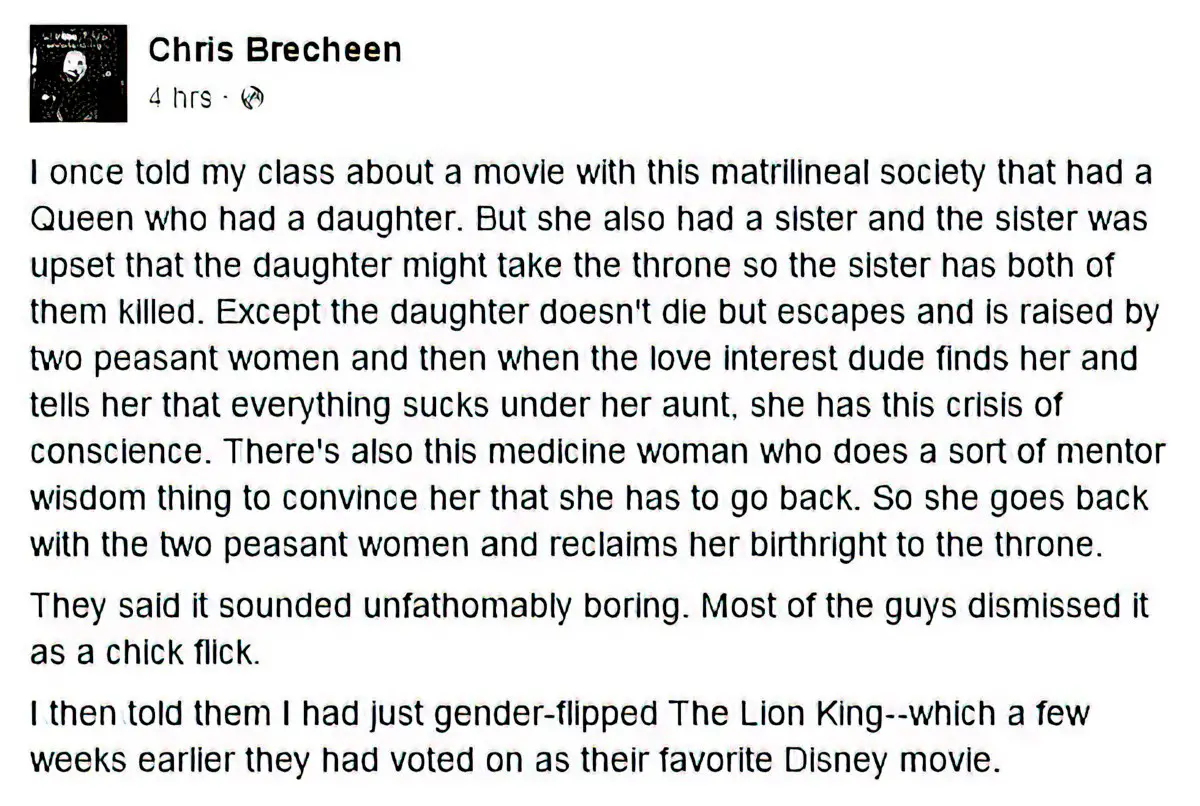
EXAMPLES OF IDEOLOGY IN CHILDREN’S STORIES
Jan Needle
Fiercely and consciously political, overtly using his narratives to confront abuse of power, sexism, racism, economic exploitation and social neglect.
Diana Wynne Jones
‘a very intelligent writer of absorbing fantasises, [who] appears to have been consistently unaware for most of her career that her depiction of women already socialized into conventional female roles is pervasively sexist (and to some extent classist).’ – John Stephens.
Jacqueline Wilson

Being a sister isn’t always easy . . . but what’s the very worst thing about your sister?
Marty and her sister Melissa couldn’t be more different. Marty loves her Converse trainers, playing football, hiding in her secret den and helping her dad with his DIY. But Melissa loves Justin Bieber and all things pink, girly and pretty.
The sisters can manage to live together, despite their occasional scraps but then Mum tells them they have to share a room. For Marty, having to share her bunk beds and lose her private sanctuary turns out to be the very worst thing about having a sister. But the girls soon discover that being too close for comfort can have unexpected consequences, and when an accident happens, the sisters realise they are closer than they thought.
The premise behind this [pink!] cover is that you should love your family and sister. This is accepted throughout the world. But actually lots of people don’t love their own family members.
Children’s books in general are permeated with the idea that families are not perfect but they are still your family. Children’s literature promotes very strong attachment to a child’s family that makes it almost impossible for any young reader to be presented with stories about pure family hatred. This is probably why children’s books very often use other figures to stand in for real family members, to allow that expression of hatred to exist in fiction. [Stepmothers.]
Take any book, for example a Mr Men book by Roger Hargreaves, and you’ll often find the same type of cultural characteristics: Simply drawn houses that look like country houses, people who wear a bowler hat/tie, women who are called ‘Little Miss’ and not ‘Mrs’. The hegemonic ideology of the Mr Men books is very Western, very middle-class.
The male characters seem to be grown-ups. The Little Miss characters seem not to be, in general.
Secondly look at the way positive and negative characteristics are constructed. Some are common, so you have Little Miss Chatterbox as well as Mr Chatterbox, and Little Miss Greedy as well as Mr Greedy.
You have Little Miss Bossy, Little Miss Fickle, Little Miss Brainy, Little Miss Contrary, Little Miss Dotty, Little Miss Giggles, Little Miss Princess, etc etc. These are quite gender specific. There’s no Mr Brainy, but there is Mr Clever. Note the difference.
Thirdly, some of the Mr Men embody *activity* -Mr Bump, Mr Tickle. They *do* things, and what they do defines them for the purpose of the book. There are few female equivalents — almost all are abstract personality factors.
Stereotypes and Children’s Books, at FTB
Somebody has written reviews on Amazon for the Mr Men series as if these simple-minded picturebooks were high literature. They’re brilliant.
See also: Mr Messy, the original video
[I am no fan of the Mr Men franchise, and although I’ve kept most of my own childhood books to pass onto and read to my daughter, I did hiff those ones out.]
IDEOLOGY IN PICTURE BOOKS
Picture books can exist purely for fun, but can never exist without either a socializing or educational intention, ‘or else without a specific orientation towards the reality constructed by the society that produces them.’
As all texts contain ideologies, so do all pictures, since we ‘read’ those too.
A lot of picture books have a story which is told by an unseen narrator. This unseen narrator has an air of authority, precisely because they are unseen. Implicit authorial control is a characteristic marker of the discourse of children’s fiction.
Pictures do offer the reader at least a representation of what is being described. The audience uses both text and pictures to create a story, and has no scope to find a dissenting opinion when the text lines up with the picture.
NOT ALL WRITERS AND ILLUSTRATORS RECREATE THEIR OWN IDEOLOGIES
Some writers are aware of their own views and create children’s books deliberately in contrast to those views.
The key, perhaps, is a certain detachment: Tan’s books are political but not polemical, and the reader never feels lectured. “I’m quite fond of illustrating stories with an ideology I don’t agree with, or illustrating parts of history that offend me slightly — and doing that almost impassively, without adding judgment,” he says. “I try to divest my work of those attachments.” With The Arrival, for example, he approached the charged issue of immigration by focusing on the human detail. “The path I chose was just to tell a story of settlement. It’s quite an intimate book — I was interested in the problems of getting something to eat, getting a job, these sorts of things.” The fantasy followed from that premise: “We need to be confused and perplexed, and we need things to look like things we know but be very different — like animals and trees and systems for getting a bus ticket and so on.”
from an article on the work of Shaun Tan in the Financial Times
Does Shaun Tan succeed in his impassivity? That’s another question. I suggest it’s slightly easier to be impassive when creating simple works of fantasy — harder when writing realistic contemporary fiction, in which case it’s impossible not to come down on one side or another.
TRANSPARENT IDEOLOGY
When the reader already believes something because it’s part of their own society, then we say that the ideology is ‘transparent’ or ‘invisible’. The readers don’t even notice that it’s there.
If there are certain people who will argue that ‘This Is The Way It Is’, then this is the very definition of hegemonic ideology: Girls like pink because this is the way it is.
Take Harry Potter as an example of transparent ideology. Because this series is so very popular, thinkers and academics have looked hard at its ideologies. Harry Potter is no more ideological than anything else, but take the following from Toby Young writing for The Spectator. Young does a good job of summing up the politics of J.K. Rowling — politics which are transparent/invisible to most readers, and certainly to most young readers:
On the face of it, there is nothing complicated about the politics of Harry Potter, who made his first appearance in The Philosopher’s Stone 20 years ago. Like his creator J.K. Rowling, who once gave £1 million to the Labour party, he is a left-wing paternalist in the Bloomsbury tradition — the love child of John Maynard Keynes and Virginia Woolf. He feels a protective duty towards the common man (‘muggles’ in the lexicon of the novels) and a loathing for suburban, lower-middle-class Tories like the Dursleys, his Daily Mail-reading foster parents. The arch-villain of the saga is Voldemort, a charismatic Übermensch who believes in purity and strength and in the final novel promotes his own version of the Nuremberg Laws through the Ministry of Magic. Indeed, the books are shot through with the mythology of the second world war and its aftermath, linking the struggle against fascism to the emergence of a socialist New Jerusalem.
But look more closely and something stranger hoves into view. What is Hogwarts, after all, but an idealised version of an English public school, with its houses, quadrangles and eccentric schoolteachers? As George Orwell points out in ‘Boys’ Weeklies’, his 1940 essay in which he tries to understand why millions of children find stories set in boarding schools so spellbinding, the ‘snob appeal’ of this milieu is ‘absolutely shameless’. ‘The heroic characters all have to talk BBC,’ he observes, something that is equally true of the Potter novels.
The Spectator
DOMINANT AND SUBVERSIVE IDEOLOGY
1. The dominant ideology
How to tell if an ideology is dominant (or hegemonic)? It’s unquestioned. We don’t notice it’s there. We would question it if it wasn’t there. But when it’s there, we don’t notice it. This is a ‘transparent’ kind of ideology.
Since the 1960s (in particular) some effort has been made in Britain and the USA to publish children’s books which would have us assume the world is white, male and middle class. Other assumptions have yet to be much challenged: That the world is heterosexual, able-bodied, neurotypical, monoamorous, amatonormative, cis-gender and so on. And progress has not been a straight line, either; books on African American themes have been decreasing since the early 1970s in the USA as a total proportion of the the book market. Other countries aren’t doing much better.
Examples of dominant ideology
- Love your family because they are your family and you owe it to them no matter what.
- Related to that one, your bloodline (ie. genetic stock) is one of the most important things about you, as a person.
- Heterosexual, monogamous relationships between adult characters are the ideal; anything else is a deviation.
- White boys are the default child who gets to leave the family and go off on adventures — everyone else is Other, and is used to tell stories related to their Otherness. (Actually there’s a word for ‘otherness’. It’s ‘alterity’.)
- War and fighting is bad unless you’re killing designated baddies to save yourself and your own community without doing it for your own power and glory.
- Try hard no matter what, never give up and you will definitely succeed.
- Related to that, good, pious children always work hard for what they have.
- [green food is yuck]
- Where there is wealth there are assholes.
- Children should not be drugged.
- Fat kids are lazy, stupid bullies who eat too much, and their mothers are basically to blame for overfeeding them.
- Girls who respect themselves will show this by wearing fashionable clothes and choosing a haircut that suits their face shape.
- etc
A dominant ideology can look invisible, but is more obvious to modern readers when opening a classic book from yesteryear. One way a book can sound patronising to certain subcultures is by rendering non-standard English in dialogue, especially when reverting to standard English from the unseen narrator. This implies that there is a correct way of speaking versus the characters’ way of speaking. But when a book is written entirely in, say, Black English, this tells the readers that Black English is a legitimate form of communication. Books for children of yesteryear quite often rendered non-standard dialects within speech marks, but reverted to a certain, hi-falutin kind of English for the rest of the story. This is no longer common. Today, ‘voice’ is important when writers seek publication, and voice can sound more unique if other voices are employed as part of the narration.
2. The alternative, subversive ideology
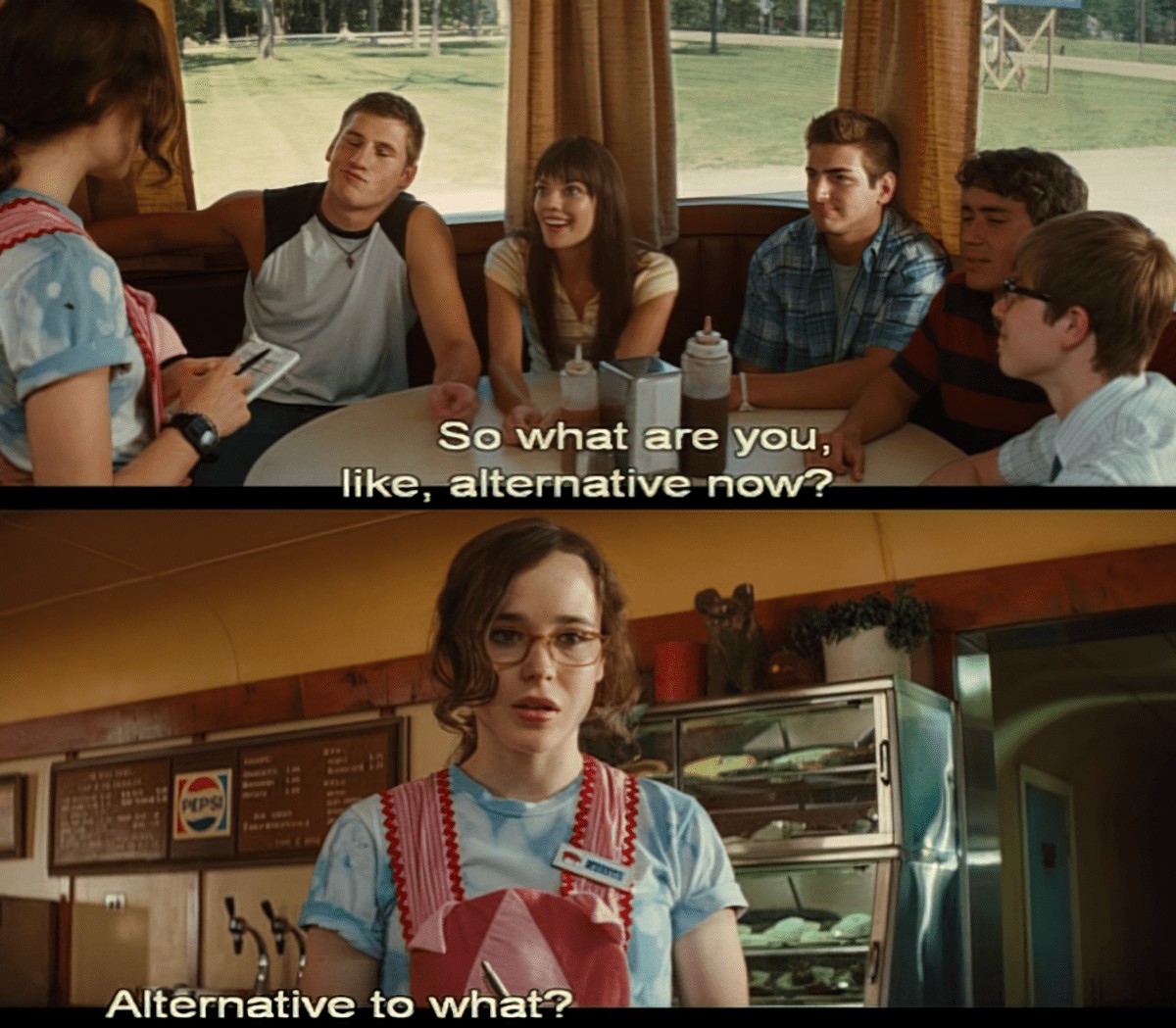
Sometimes an alternative ideology is deployed within a story with a dominant ideology, managing to subvert reader expectations.
Examples of subversive ideologies [from me]:
- Marjery Hourihan (Deconstructing The Hero) offers some favourite examples of stories which successfully subvert the traditional heroic tale.
- Margo Lanagan’s The Best Thing is a story of teenage pregnancy which is not an outright disaster for the young mother, unlike hegemonic ideas about young mothers and their unhappiness.
- The Hunger Games may be subversive in that young people are killed by other young people, though you could argue that this is only subversive when compared to stories from the past few hundred years. Tales of war and fighting go way back.
Definitions of ‘subversive’ will vary enormously according to era and culture. A subversive story in America may seem very mainstream in France and vice versa. These are completely subjective because they depend so much on what’s considered dominant.
PASSIVE AND ACTIVE IDEOLOGIES
This categorisation comes from a paper by Peter Hollindale, 1988: Ideology And The Children’s Book.
When an author hasn’t consciously conveyed a particular ideology, then theirs is a passive ideology. Almost no attention has been paid to this aspect of children’s literature. JS speculates that this is because it overlaps with the issue of ‘the implied reader’, and we’ve all been more concerned about that.
The work of Enid Blyton is infused with the author’s own assumptions about white, middle-class English children. Blyton’s ideologies were almost certainly passive. Passive ideologies are characterized by ‘this is how it is’. It’s worth noting that children’s literature is characterised as being overwhelmingly conservative. Kidlit tends to replicate the conditions of its creation. British publishing tends to be conservative in values. [As is the American publishing industry, especially around sex. 50 Shades of Gray was picked up first by an Australian small press, presumably because the author couldn’t find an American one who would touch it.]
When an author actively attempts to subvert and transgress conventional, dominant ideologies, then this is an active ideology. C.S. Lewis wrote The Chronicles of Narnia with the intention of transmitting a Christian ideology to his readers. [Likewise, Philip Pullman wrote His Dark Materials trilogy with the intention of undoing what C.S. Lewis had started.]
THE INFLUENCE OF CHILDREN’S BOOKS ON YOUNG READERS
The ideology of a children’s book acculturates the child reader, no matter whether its ideologies are passive, active, alternative or hegemonic. Because of that, the child will be influenced. There is a stark imbalance between the creator and the addressee of a children’s book. The adult creator, with a longer experience of processing and of being exposed to various ideologies, is in a position of authority.
If you’re a writer you’ll be familiar with the different types of point of view: first person, unreliable first person, (close) third-person, omniscient etc. There’s another way of breaking down point of view when discussing ideology:
Perceptual Point Of View — Who sees?
Phenomena such as objects, events,. people, landscape etc. within the world of the story are focalized by some perceiving agent (the focalizer). There can be a lot of switching between narrator focalization and character focalization, and between various characters. But in children’s literature it is unusual to find narratives extensively focalized by more than a narrator plus, say, one main character. (Stephens uses the word ‘focalization’, but I have also heard ‘close third person’. In this subset of third-person narration, the audience is encouraged to identify closely with the character we know the most about.)
Conceptual Point Of View — Who interprets what is seen?
Conceptual point of view comprises all intratextual acts of interpretation of all kinds. This works a bit differently in novels than in picture books, though the overall effect is the same. Sometimes in children’s literature, if you look closely, you’ll see adult words coming out of the mouths and minds of young characters. Sometimes, a conceptual point of view even comes through in the inquit-tags (also called speech tags or dialogue tags) such as ‘he said,’ ‘she demanded’. For example, the inquit-tag ‘declared’ almost invariably has a pejorative association in children’s books, marking an utterance as opinionated or wrong.
FEMINIST IDEOLOGIES
A feminist book such as Babette Cole’s Princess Smartypants tries to promote a counter-hegemonic reading of marriage and being a girl. [As does Frozen, the wildly popular Pixar movie.] For more examples from the wider culture and cinema, many people don’t realise that princesses and pink are not actually an intrinsic part of girlhood — that little girls have been acculturated into identifying with these things.
[For more on Babette Cole’s so-called feminist book, see: inversion is not the same as subversion.]
EDGY CONTENT DOES NOT EQUAL SUBVERSION
A number of books have been banned by various organisations because of the ideas they transmit. Often these books are banned because they have been completely misread, not because they’re introducing subversive ideology at all.
According to many critics, who do actually understand the banned books, it is not books that promote certain ways of life/beliefs/values that are dangerous. The most dangerous books are those that normalise certain ways of life without encouraging readers to question.
By the way, subject matter has nothing to do with ideology. There are a lot of books which people call ‘sooo radical’ which are nothing of the sort. The reason they seem radical is because of sexual/violent/drug content. In fact, the inclusion of ‘edgy content’ does not necessarily subvert any hegemonic ideology. For example, a book which contains drugs in young adult literature will most often convey the idea that Drugs Are Very Bad, No Question, which is actually not a subversion of dominant thinking at all.
You’ll find a number of children’s books that feature rainbow parenting — an actively ideological sort of story — will nevertheless rely on hegemonic ideologies about relationships in general. For example, the homosexual parents will be monogamous, not too far removed from the nuclear family of the 1950s. [This is probably to do with the fact that cultural change happens one step at a time, and the publisher wants to sell some copies.]
Likewise, you can have an incredibly radical story in something that is at first glance very mainstream.
IDEOLOGY AS COMFORT AND BRIDGE
Children’s books are often used to comfort a child, or to make an event in their lives more understandable. It’s impossible to have a truly radical book which gets rid of all norms. Norms are what you anchor your reflection in. If you had a text which had a completely new ideology, new values, new social order, you’re actually going to be alienated from the story altogether. The most effective books strike a balance between the normativity of hegemonic ideals and the new ideas presented within the text.
AWARD WINNING BOOKS AND POLITICS
A society which has book awards is a society that chooses which ideas it wants to promote via texts. A book award is a strong ideological decision because it validates certain reinforcements of The Ideology. Shaun Tan won the Astrid Lindgren award, the equivalent of the Nobel Prize for children’s literature. Shaun Tan writes about experiences of immigration and integration. He has a steampunk take on the world, with a strong political comment on the world. We see in his work something we want to see in society. The branch of children’s literature which is involved in dishing out the awards tends to be quite left wing in values, though the popular commercial fiction is more on the right-wing side.
On the other hand, Waterstones (with its strong financial motivations) finances the Children’s Laureate, rewards authors such as Julia Donaldson, whose work is very mainstream, very successful financially and less challenging to children. Empirical studies show that children tend to prefer more sophisticated pieces of work (like Tan’s), just like adults do, so Waterstones is an interesting study in contrast.
POPULAR BOOKS
Best-selling books for children tend to conform to a capitalist, consumerist, liberal, democratic, humanist ideology, seen as benign and benevolent, but at the same time, is not transgressive. Julia Donaldson has no political message, and conforms to dominant ideas about parenting and teaching etc. Her books can therefore become best sellers. However, they certainly contain ideologies.
Take Zog, widely hailed as a feminist triumph, as it stars a girl who saves a boy. This is an excellent example of inversion without subversion.
The following summary of Zog describes exactly how ‘girl heroes saving boys’ is Female Maturity Formula rebranded:
Zog is an accident prone dragon failing in his training but he gets by with help from a mysterious girl. When he has to take on the hardest task at Dragon School — capturing a princess — she’s on hand to save the day again.
The Gender Agenda: A First-Hand Account of How Girls and Boys Are Treated Differently by James Millar and Ros Ball
Even in their own summary of the book, the authors of The Gender Agenda failed to notice that the girl is not the star of the story. She is the hero and saviour, but also the more mature and sensible helper. She is a blow-in saviour trope, coming to the rescue whenever Zog injures himself in his quest to become a fearsome dragon. The story is a spoof on the classic ‘girl princess saved by a knight from the scary dragon’ story which is why, at first glance, it looks like a feminist triumph. However, a closer look positions the girl character in the same old, same old sexist stereotype of mature little arbitrator. The scene in which Princess Pearl stands between the dragon and the knight, breaking up their fight, is staged as a female character between two warring male characters, telling them off for fighting. Not only are girls good little nurses (to male characters) but they’re also useful when it comes to breaking up fights (between male characters).
See also my analysis of Zog, a picture book by Julia Donaldson and Axel Scheffler.
STORIES DO NOT EXIST IN ISOLATION
Semiotic and post-structural literary academics have exposed this:
All writing exists in a larger world of writing, of intertextuality. The implications of such a context for the reading of literature are exciting to some — a promise of interpretive freedom — but discouraging to others, since interpretations of particular works can never be more than provisional, always contingent upon a wider horizon of writing. The meaning of a work cannot be found within its own boundaries.
Confession and Complicity in Narrative by Dennis A. Foster
Standing alone, Zog is not an overtly sexist story. Its ideology only becomes apparent once considered within the corpus of children’s stories and the a history of real world misogyny.
RELATED
The Trouble With Normal: Trans youth and the desire for normalcy as reflected in young adult literature, a paper by Robert Bittner
“All writing is political. To assert that it’s not is political. If your politics is mainstream, it’s invisible. If it’s on the fringe and based on what you referred to earlier as the politics of difference, then it’s ‘visible’ and suddenly political, and ‘aesthetics’ – which are also political! – can suddenly be compromised.”
Selina Tusitala Marsh (speaking to Witi Ihimaera)
Obviously, I think of the writer of novels and stories and plays as a moral agent. . . This doesn’t entail moralizing in any direct or crude sense. Serious fiction writers think about moral problems practically. They tell stories. They narrate. They evoke our common humanity in narratives with which we can identify, even though the lives may be remote from our own. They stimulate our imagination. The stories they tell enlarge and complicate—and, therefore, improve—our sympathies. They educate our capacity for moral judgement.
from Susan Sontag’s “At the Same Time: The Novelist and Moral Reasoning”
